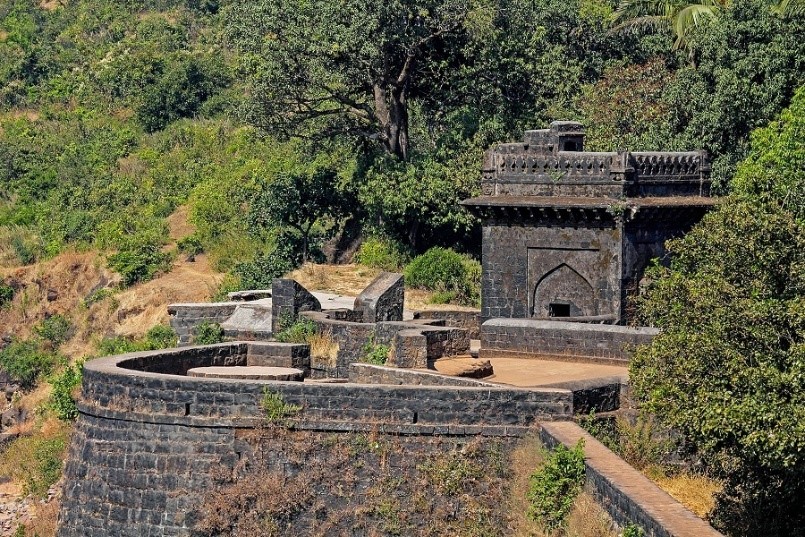Description

Disclaimer: Copyright infringement not intended.
Context:
- The Archaeological Survey of India (ASI), Mumbai Circle, celebrated World Heritage Day at Panhala Fort, showcasing the rich history and heritage of the fort.
Theme: 'Discover and Experience Diversity'
- ASI officials organized a photo exhibition titled 'Maratha Military Landscapes' to highlight the fort's history and heritage.
- Panhala Fort was declared a monument of national importance on January 2, 1954.
Panhala Fort
Location and Significance
- Located in Panhala, 20 kilometers northwest of Kolhapur in Maharashtra.
- Strategically located overlooking a pass in the Sahyadri mountain range, a major trade route from Bijapur to coastal areas
History
Construction and Early Years
- Built between 1178 and 1209 CE by the Shilahara ruler Bhoja II.
- Associated with the aphorism "Kahaan Raja Bhoj, kahan Gangu Teli".
- Passed into the hands of the Devgiri Yadavas in 1209–10.
Under Various Dynasties
- Became an outpost of the Bahamanis of Bidar.
- Fortified extensively by the Adil Shahi dynasty of Bijapur in 1489.
- Witnessed several skirmishes involving the Marathas, Mughals, and the British East India Company.

Shivaji's Rule
- Taken by Shivaji from Bijapur in 1659.
- Shivaji's escape from the fort in 1660 during a siege by Adil Shah II is a notable event.
- Occupied permanently by Shivaji in 1673.
Under Kolhapur Kings
- Became the center of disputes between Sambhaji and Rajaram I after Shivaji's death.
- Captured and recaptured by various forces, including the Mughals and the Marathas, in the late 17th and early 18th centuries.
- Used as the headquarters by Tarabai Ranisaheb during her rule in the early 18th century.
British Rule and Later
- Taken by the British in 1827 and later dismantled in 1844.
- Seat of the Kolhapur government was moved from Panhala to Kolhapur in 1782.
Major Features
- One of the largest forts in the Deccan, with a perimeter of 14 km and 110 lookout posts.
- Built on the Sahyadris, rising more than 400 m above its surrounding plain.
- Features numerous tunnels and fortifications in the Bijapuri style, with notable structures like the Andhar Bavadi, Kalavanticha Mahal, and Amberkhana.
- Temples and mausoleums dedicated to various figures, including Shivaji, Sambhaji II, and Ramchandra Pant Amatya.
Significance of Panhala Fort
- The fort reflects the transfer of power among various dynasties, including the Yadavas of Devgiri, the Bahamani of Bidar, the Adilshahi of Bijapur, the Marathas, and the Mughals.
- It is strategically located near trade routes connecting the Sahyadri mountains, the Deccan plateau, and the Konkan coast.
Architectural Features
- The fort is partially protected by natural scarp and strengthened with basalt stone fortification.
- It features three double-walled gates, including the Chaar Darwaja and the Teen Darwaja, which is the main entrance.
- The fort also includes several water bodies, such as Someshwar Tank, Sadhoba Tank, Khokad Tank, and Idgah Tank, along with notable structures like Andhar Vav and Nayikinicha Sajja.
READ ABOUT WORLD HERITAGE SITE: https://www.iasgyan.in/daily-current-affairs/world-heritage-site
|
PRACTICE QUESTION
Q. Panhala Fort is located in which state of India?
A) Karnataka
B) Maharashtra
C) Goa
D) Kerala
Answer: B)
|















